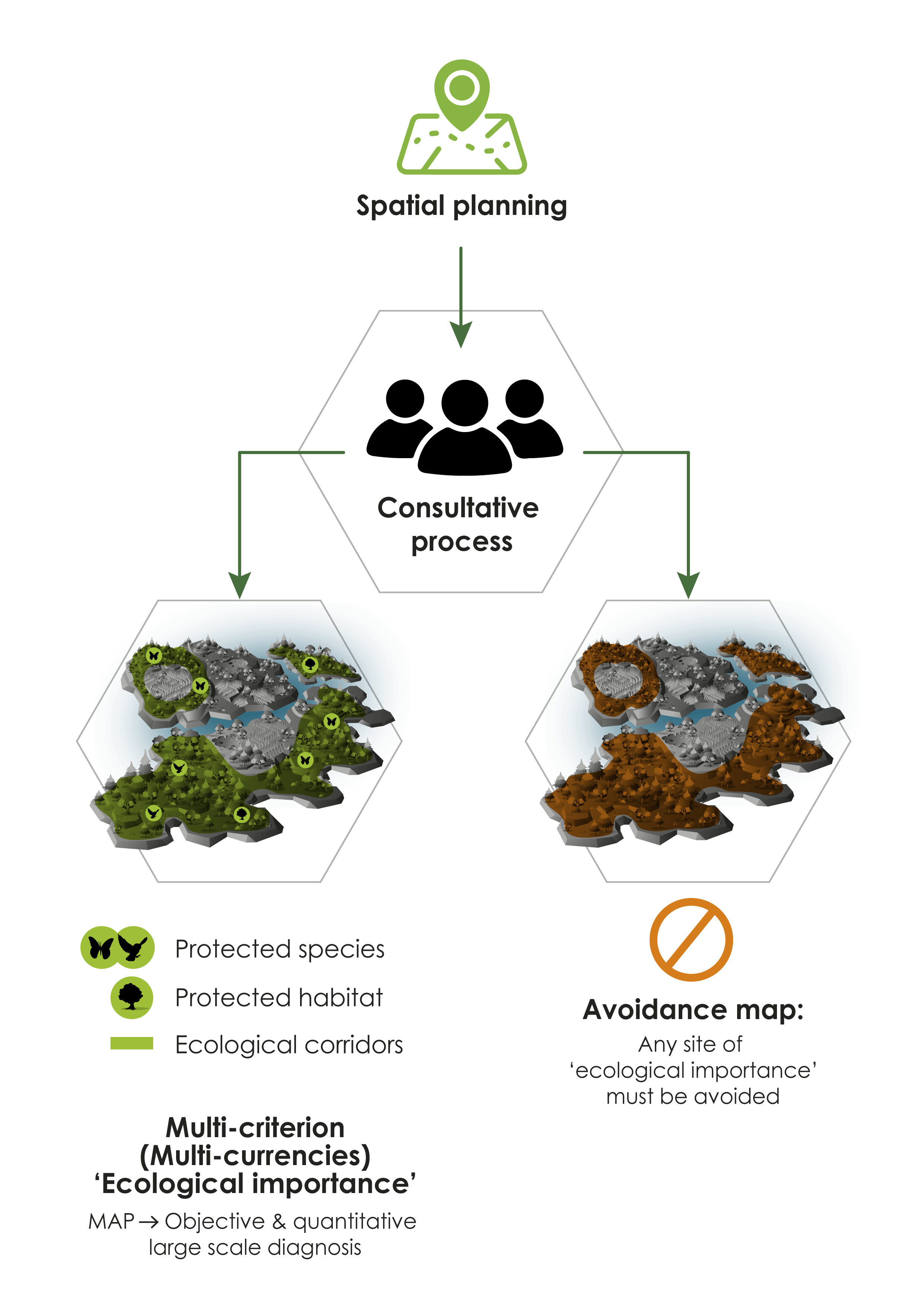The role of strategic planning in the context of infrastructure development is to 1) evaluate and create a ‘hierarchy of need’ for infrastructure for a given territory, and 2) to identify and evaluate the conflicts between transport infrastructure and biodiversity conservation (see Chapter 4 – Integration of infrastructure into the landscape for further the details on spatial planning).
Avoidance measures that have been applied should be visible when documenting the choices and the selected solution. A rationale should also explain why the chosen solution is the most satisfactory in terms of environmental issues, and which impacts on biodiversity have been avoided.
Avoidance requires communication amongst project planners, environmental professionals, and with the social elements associated with a project. In this context, the elaboration of the master plan constitutes a specific occasion for all relevant stakeholders to communicate about their strategy for the development of the territory. It should be an important part in the decision process regarding the project development, leading to a collective questioning of the needs of the territory in terms of infrastructure and therefore the enhancement of upstream avoidance. Thus, the transport infrastructure integration should be defined on the land development master plan (see Chapter 4 – Integration of infrastructure into the landscape for more details and prescription on the integration of infrastructure at the landscape scale). This integration would be efficient if the local administration is well-coordinated with the regional and national ones and vice versa. Similarly, any existing conservation strategy or plan, should also be integrated into the master plan to appropriately balance the expected future impacts due to transport infrastructure development with conservation targets and goals (Figure 3.2.1). These considerations have a major role in upstream choice of solutions and can provide a general framework to favour technical scenarios that would help prevent conflict between biodiversity and infrastructure and improve infrastructure development acceptancy. Applying avoidance within the master plan remains in many countries, for now, limited to a description of the protected areas or other main issues regarding biodiversity. Regional master plans or municipalities land plans are designed in many countries as the tools to implement avoidance actions to protect biodiversity with regard to the proposed development projects. These plans aim to protect the protected and other sensitive areas. However, these plans lack tools for creating a hierarchy of these issues and adequate consultation associated with avoidance. Consequently, biodiversity is only considered as a constraint to development projects and is not included as an asset that could be enhanced or restored to benefit biodiversity and also the valuable ecosystem services that provide to societies.
Nevertheless, some examples pave the way for the integration of avoidance in spatial planning for transport infrastructure in metropolitan areas. Innovative work in that direction has been implemented in many urban areas in France such as Montpellier, Nimes and Toulouse. First, an ecological assessment was undertaken to identify areas of high ecological importance. This was followed by ecological modelling to understand the ecological functions of the territory regarding different key species. Stakeholders were then involved in a participative process to create and validate the assessment. Finally, the assessment was used by stakeholders and the authorities to determine how avoidance could be strategically applied. This resulted in a conservation strategy integrated within the strategic planning for the territory instead of being a non-coherent accumulation of multiple avoidances done project by project.
Biodiversity is thus considered as a specific consideration in systemic strategic planning rather than as a constraint. This approach goes well beyond current practice and gives both the territory’s administration and stakeholders a better understanding of the ecological issues regarding the construction. It also enables stakeholder discussion for those parts of the territory where development is or is not feasible.
